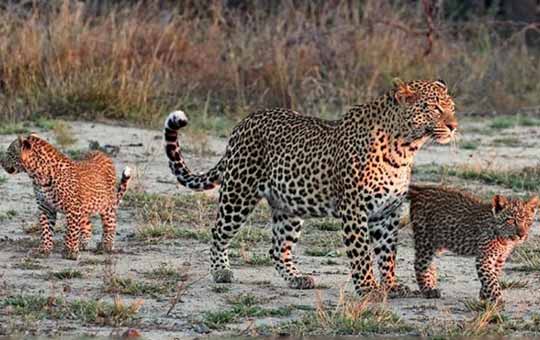Leopard Safari in Bera, Rajasthan (480 words)
Nestled in the Aravalli hills of southern Rajasthan, the village of Bera has emerged as one of India’s most unique and offbeat wildlife destinations. Unlike the better-known national parks of India, Bera is not a protected sanctuary or national park. Yet, it offers one of the highest chances of spotting leopards in the wild, in a habitat that’s unlike any other—granite hills, scrub forests, and human settlements existing in remarkable harmony.
The Leopard’s Natural Territory
What makes Bera truly special is its thriving leopard population living outside a traditional reserve system. Leopards here are often seen lounging on rocky outcrops, emerging at dusk to hunt or survey their territory. The granite hills of Bera provide natural caves and crevices, which serve as perfect dens for these elusive cats. Despite their proximity to human villages, leopards in Bera are known to be non-aggressive, a behavior likely shaped by generations of coexistence with the local Rabari community.
Rabari Culture and Coexistence
The Rabaris, a pastoralist tribe native to this region, have developed a symbiotic relationship with wildlife, particularly leopards. Their spiritual beliefs and deep respect for animals have contributed to an ecosystem where predators are not feared, but accepted as part of life. Even when occasional livestock losses occur, retaliation is rare, making Bera a shining example of human-wildlife coexistence.
Safari Experience
A typical leopard safari in Bera is a far cry from the crowded gypsies of national parks. Here, safaris are conducted in open 4×4 vehicles, usually in the early morning or late afternoon, when leopard sightings are most likely. The terrain is rugged but scenic, with panoramic views of the Aravallis and nearby Jawai Bandh (dam), a large reservoir that attracts a variety of birdlife including flamingos, cranes, and eagles.
The safaris are operated by local guides and naturalists who know the leopard territories intimately. With careful tracking and a bit of patience, guests often get lucky—sometimes spotting leopards perched regally on boulders or emerging from the shadows at dusk.
When to Visit
The best time to visit Bera is from October to March, when the weather is pleasant, and sightings are frequent. During the monsoon (July–September), safaris may be limited due to the rains, and leopards tend to move higher into the hills.
Accommodation
There are several boutique safari lodges in and around Bera, ranging from luxury to eco-friendly stays. Many of these are family-run and offer immersive experiences that go beyond wildlife—cultural walks, village visits, and traditional Rajasthani cuisine.
